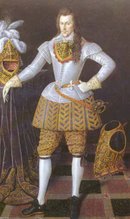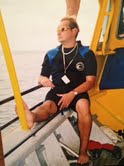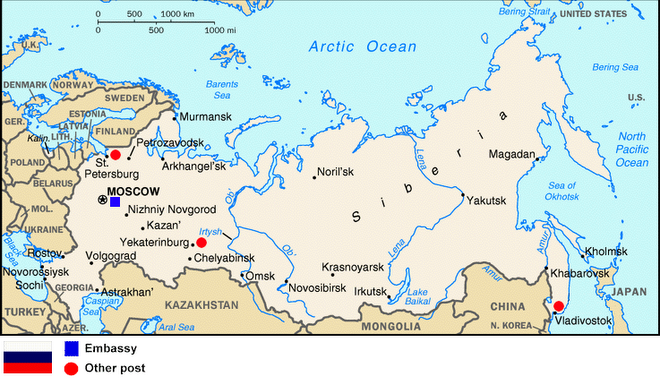A sell-out house at the Bolshoi on Monday night to see the Mariinsky, on tour to Moscow as part of the Golden Mask festival, dance three one act ballets.
And an interesting choice for the three:
- Serenade; the George Balanchine® piece - no, really, the Balanchine Technique is actually a registered Mark in the USA. A clever thing to choose because the Bolshoi has this piece in repertoire too, so we’re all invited, in the home crowd, from the outset, to compare the Mariinsky to the Bolshoi
- In the Middle, somewhat elevated – a assertively modern piece designed to show that the Mariinsky is cutting edge too (take that Alexey Ratmansky! – who, BTW, is *leaving the Bolshoi* at the end of this year – that’s a shame because I love his work; but the Bolshoi’s not feeling the love, one hears)
- Le Réveil de Flore – a museum-piece confection, in case the traditionalists were still shocked by the previous work, and an unmistakable reminder that the Mariinsky is the senior, Tsarist Russian dance company, so-to-speak
I am not sure that these three fit lovingly together as an ensemble; but as a statement of the Mariinsky’s artistic range and methodic dexterity, it was effective.
Serenade (choreographed by George Balanchine®, set to Tchaikovsky’s 'Serande for Strings in C major' (op.48)
First off I should say that the Mariinsky’s Pavel Bubelnikov conducted (their?) orchestra beautifully and it was as though I heard this piece – which I know well – for the first time.
My program notes included:
- “Balanchine – it’s all about the fingertips!” – well yes, he put great store in the way the dancer use the tips of the fingers and, indeed, the placement of the feet. Slightly artsy, but nice.
- The principal hero: “walks like a cat” – not sure that’s a hugely meaningful insight into the dancing of Denis Firsov but, yes he does
- In the Elegie, which in this balletic presentation of this music is what they end on (reversing it, in the actual order of the Tchaikovsky piece, with the ‘Tema Russo’), there’s a sort of apotheosis moment, with one ballerino and two ballerinas. This includes the wonderful Viktoria Tereshkina (I think, I don’t know the Mariinsky cast by sight the way I do of the Bolshoi’s). I just loved the way one ballerina stands behind the ballerino and just uses her arms and, suddenly, he is a flying angel.
I was also struck how the Mariinsky cast seemed larger, stronger than the Bolshoi cast for this piece and so I perceived Serenade as being much less limply, chocolate-boxey than previously I have judged it. On this showing, it *is* done better by the Mariinsky than the Bolshoi (controversial, but c'est la vie).
In the Middle, somewhat elevated (choreographed by William Forsythe, set to [the then young] Thom Willems’ piece of the same name)
- horrible music! Migraine inducing. Not played by an orchestra, but from tape, we are reminded that the Bolshoi New Stage’s sound engineer should be stripped naked, thrown into the snow and horse-whipped. The architecture of the electronic sound scheme at the New Stage is piss-poor and the speakers kind of slam the music into you.
Actually, heard from the Net, the music sounds much better than what we had to endure on Monday night. Willems and Forsythe are long-term collaborators but I am not sure that the poor sound-staging demonstrated Willems at his best on Monday.
- BUT as “a piece of art” (as a colleague, who also happened to be there that night, said to me), it is quite spectacular. The Soviet style of ballet is very strong, almost athletic, and this is a piece requiring the enormous physical strength of all the performers and suits dancers brought up on the choreography, and under the artistic dictatorship, of Yuri Grigorovich)
- Lead Mikhail Lobukhin was Herculean in this piece and his body produces taut counterbalance-and-pully for his ballerinas, before effortlessly segueing into limpid fluidity. He has that slightly cocky, but beguiling, mixture of graceful elegance, passion and raw attitude, that reminds me of Nureyev at his best.
This piece stayed with me for several days after I saw it. There are several extracts and versions of it on YouTube.
All glory to YouTube, there’s a short exert of the piece nicely introduced by the UK’s now sadly retired prima ballerina, Darcey Bussell. I never saw her dance live… (sniffs). It's been blocked from embedding, but you can find it here.
Le Réveil de Flore (choreographed by the great Marius Petipa, the ‘father of all ballet’, set to a piece of the same name by Riccardo Drigo)
I am not a huge fan of this sort of ballet, but the home crowd laps it up. It is, though, a fine example of high classical ballet, and the Mariinsky does it extremely well. Personally, I think it has more camp than a tribe of Bedouin, but that’s just me.
Ripped from YouTube (and captured by someone naughty who recorded the Mariinsky illicitly – I don’t approve per se, but it is sure useful for these posts) is the opening (and the YouTuber has some useful notes on the ballet actually, if you double-click on the link to the original YouTube page):
While not a triumph, it was a successful exhibition night for the Mariinsky. Artistically, I am not sure the Bolshoi is yet quaking in its boots, but in terms of technique, one is reminded that even the mighty Bolshoi has better not be complacent. The Mariinsky demonstrated technical excellence on Monday.
Subscribe to:
Post Comments (Atom)





No comments:
Post a Comment